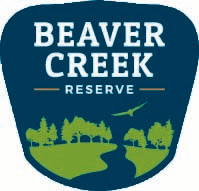 |
| Jerry Polden and Jerad Polden, Beaver Creek Reserve staff |
On Tuesday, April 23, with the help of some volunteers, Beaver
Creek staff conducted a controlled burn on our 2.5-acre savanna. Burns are conducted on the savanna on a four-year
rotation. It’s not something we do for
fun – although it is kind of fun. Savannas
are an uncommon habitat type in the state of Wisconsin and maintaining savannas,
in its original state, is best accomplished through burning. In the state’s
history, many more acres of savannas have existed. Fires formed the original savanna landscape,
and were either started by acts of nature or were set by native people in order
to control brush and increase the productivity of mast and fruit producing
shrubs and trees. Burns also made traveling across the landscape easier.
Savannas are typically burned in the spring to best suppress
the sprouting cool season grasses, and, if the fire is hot enough, the burns are used
to kill back the brush and tree species that are constantly trying to invade. Beaver
Creek’s savanna is burned to promote the growth of warm season prairie grass
species and wildflowers endemic to savanna areas. A scattering of bur oak is also a part of the
savanna landscape and, since they are resistant to fires, they persist – burn
after burn.
The burn this spring was less than ideal. A week before the burn, floods deposited a
layer of silt that coated every leaf and blade of grass. The resulting burn was cooler than desired
and more work will have to be done to treat the invading brush and tree
species. But, the burn will recycle
nutrients beneficial to all of the prairie plants, and we will definitely
notice a response to the burning.
In a few weeks, the blackened areas will be gone, and a sea
of growing green vegetation will predominate.
It’s fascinating to watch nature at work. Come over to Beaver Creek Reserve and check
it out for yourself!
Jim Schwiebert
Beaver Creek Reserve Naturalist

